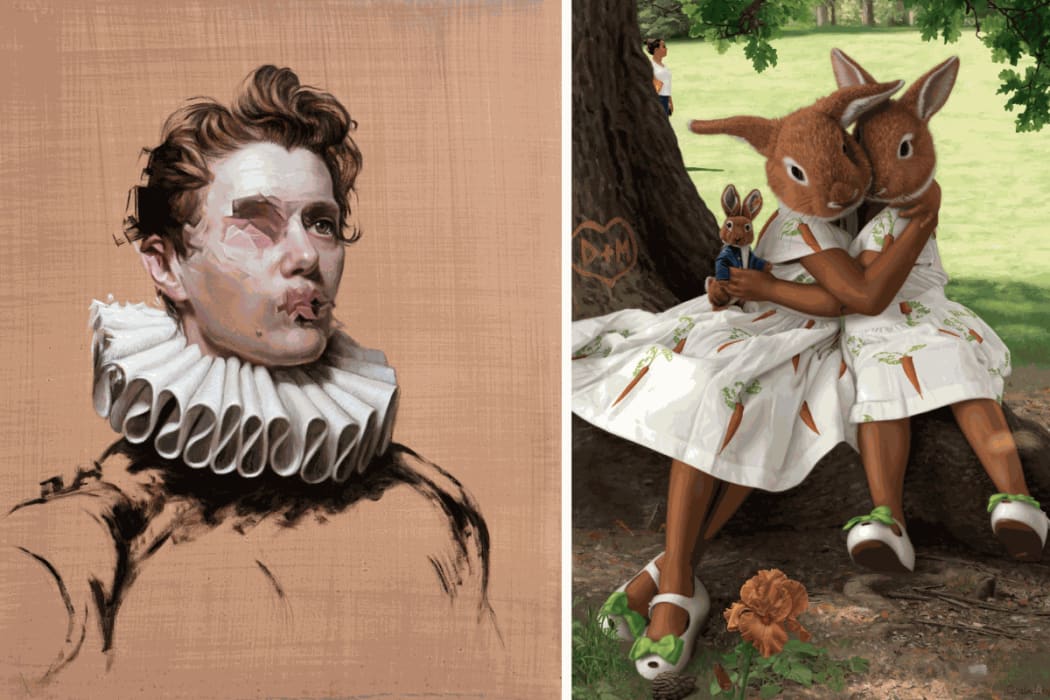
An unforgettable journey into the realm of portraiture began with the dual solo exhibition of Ben Ashton and Matthew Grabelsky, inaugurated at the Dorothy Circus Gallery in Rome. In a blend of surrealism and references to the past and contemporary world, where the portrait becomes a bearer of profound meanings, the two artists lead us into other, magical, and fascinating realities.
Who are these two artists, and what do they want to convey through their unique works?

A LOOK AT THE STORY OF BEN ASHTON
Humor is also one of the fundamental elements of his work. Grabelsky has always loved visual humor, and often a funny thought is the initial spark for his pieces. If he sees a viewer enjoying his work, he feels happy and knows he has achieved his goal. He wants the viewer to feel joy when looking at his paintings.
In the artist's own words: "Sometimes people tell me they don't know if what they see in my paintings is exactly what I'm trying to convey through them. When I hear this, I understand that the work has been successful because I know these people have engaged with it, and while the piece has sparked their imagination, they are trying to find its meaning or story."
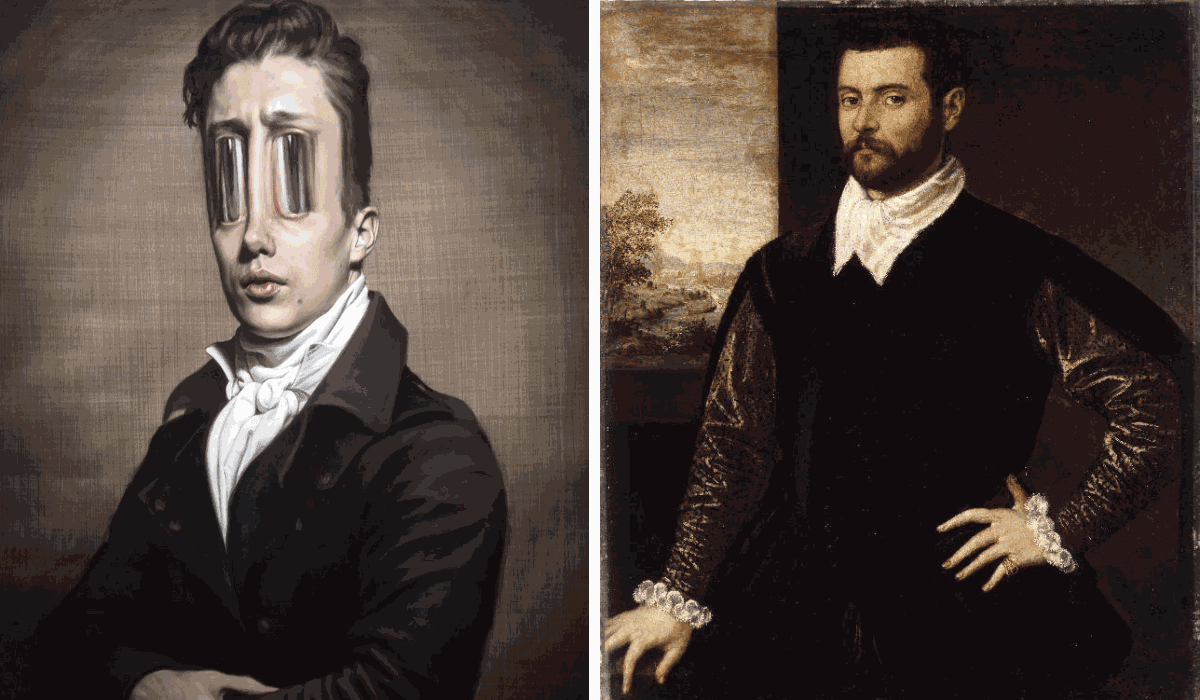
Ben Ashton, known as the "master of subversion," presents "Weaponized Nostalgia," an extensive stylistic exploration that embodies his artistic evolution.
Ashton's works intersect nostalgia and abstract impulses, subverting reality in an almost psychedelic way. These pieces reveal a profound exploration of classical art, Victorian costume, and human nature. Recurring themes include self-portraits and portraits of his family.
Ashton uses both classical painting techniques and contemporary technological media to create stimulating and captivating works. Drawing inspiration from the "swagger portraits" of artists like Thomas Lawrence, he critiques contemporary political hypocrisy and underscores the cyclical nature of history.
Ashton views his body of work as a personal narrative, a visual chronicle of his life and the lives of those around him. According to the artist, a posthumous retrospective of his work would reveal the entire course of his life through painting, witnessing the passage of time—"You would see someone age," he says, adding a touch of his love for the resilience of portraiture: "It has a strange genealogy and has been part of humanity's medium of expression for centuries."
THE ART OF BEN ASHTON: A HARMONIOUS UNION OF PAST, PRESENT AND FUTURE
In his works, Ashton juxtaposes traditional technique and references to classical art with a hypermodern twist and surrealist subversion. He has always regarded the history of portraiture as a framework to comment on current events and express his critical vision. Humor is a tool he uses to alleviate concerns about humanity, highlighting the cyclical nature of events. His characters are antiheroes, unaware of the pain they cause and oblivious to their impending self-destruction.
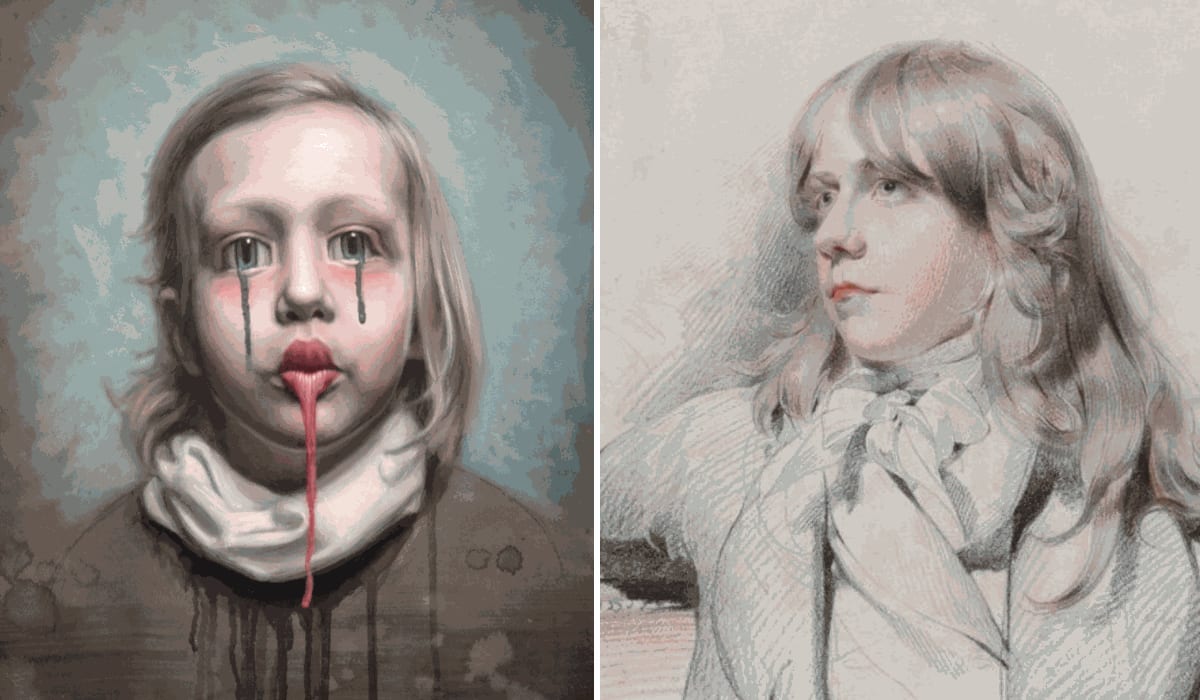
His works, both unsettling and captivating, create a distortion that captures the viewer's gaze, immersing them in an ancient and contemporary reality. Like Grabelsky, Ashton also grew up in an artistic environment, with parents involved in the arts. However, he only took art seriously in university, deciding to focus on it for its longevity, expressive possibilities, and room for expansion, after considering other careers such as a musician or actor.
Ashton had a very unique artistic education. He completed his BA at Newcastle University in 2006 and then went on to complete his MA at the Slade School of Fine Art in 2008. While studying, he began teaching himself to paint by looking at books and live artworks in museums.
He would spend hours in front of paintings in museums to understand the various techniques of layering. He focused on different great masters of painting until he felt he had learned what he wanted from each of them, and through this contact with their works and his long experimentation, he developed his own style that is absolutely unique and exceptional.
ART AS THERAPEUTIC ACT
What brings Ashton the most joy in painting is the tactility of the paint and the endless problem-solving at the beginning of a painting.
He loves the time it takes and its gradual evolution, finding that the process of painting is never boring because it is constantly evolving. For him, painting is also therapeutic, allowing him to alleviate his anxieties through an act of gradual creation.

However, he finds it difficult to look to the future of his work, as he is deeply tied to his reaction to current issues.
Ashton draws inspiration for his works from current geopolitical issues and the history of art, finding connections between humanity's mistakes in various historical periods.
His works clearly reference English culture and history, particularly the Victorian era. Reflecting on the days of the empire through a contemporary lens can show how far society has fallen in the modern world, thus becoming a form of social criticism.

Ashton's muse and inspiration is his wife, the photographer Fiona Garden. Furthermore, he extensively explores self-portraiture, placing himself at the center of his own work. His son is also often featured in his portraits, and over the years, his family has become a cast of characters playing various roles.
The artist loves to limit himself to this small group of people, as this kind of limitation pushes him to become more creative.
LOOKING TO THE PAST TO SEE THE FUTURE
For Ashton, the idea of legacy in art is fundamental and plays a significant role in his work, which reflects aspects of contemporary culture while conveying a sense of eternity. He uses oil painting because he believes it will stand the test of time, and he hopes that his work will serve future artists, just as the works of the past have inspired him and other art lovers.
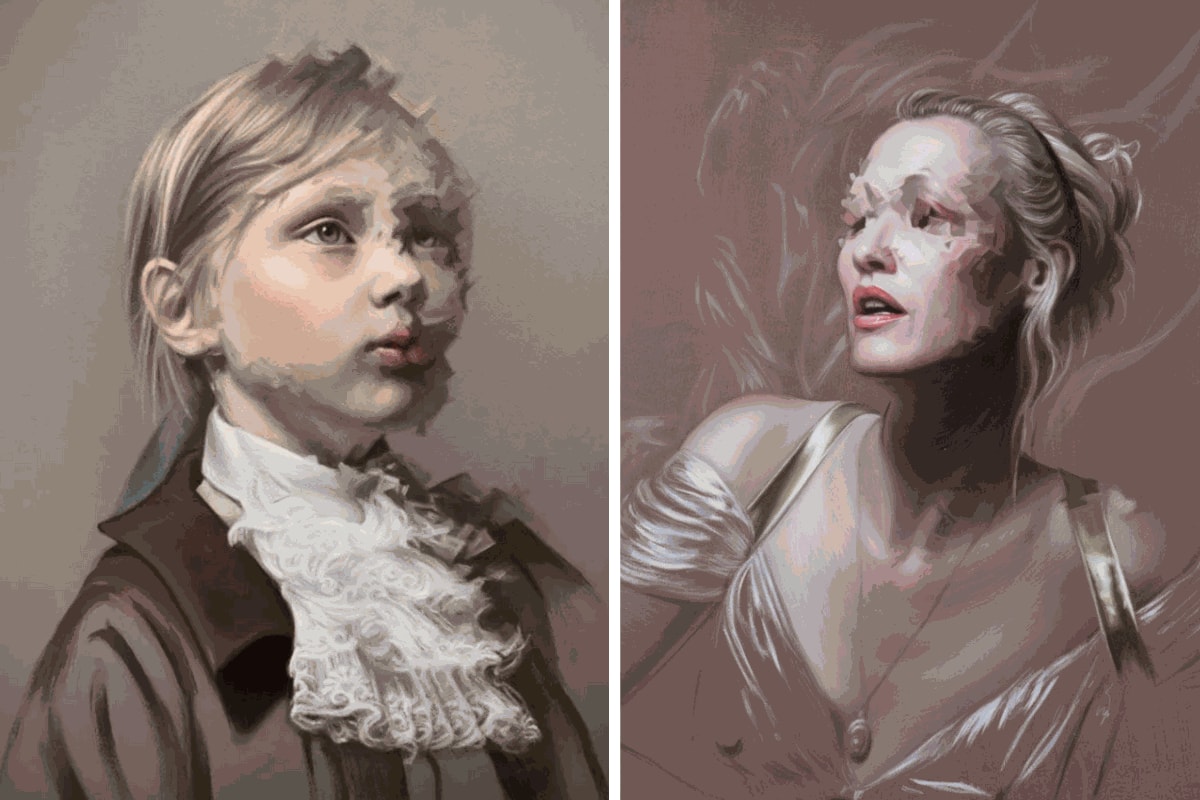
He draws primary inspiration from Thomas Lawrence, but also looks to Reynolds, Gainsborough, and occasionally Raeburn.
His work is influenced by past art, predominantly figurative but extremely modern, addressing the challenges of contemporary life and the political and social impact of the past. The poses he uses recall art history, giving his paintings a timeless sense of familiarity, allowing people to appreciate them both today and in the future.
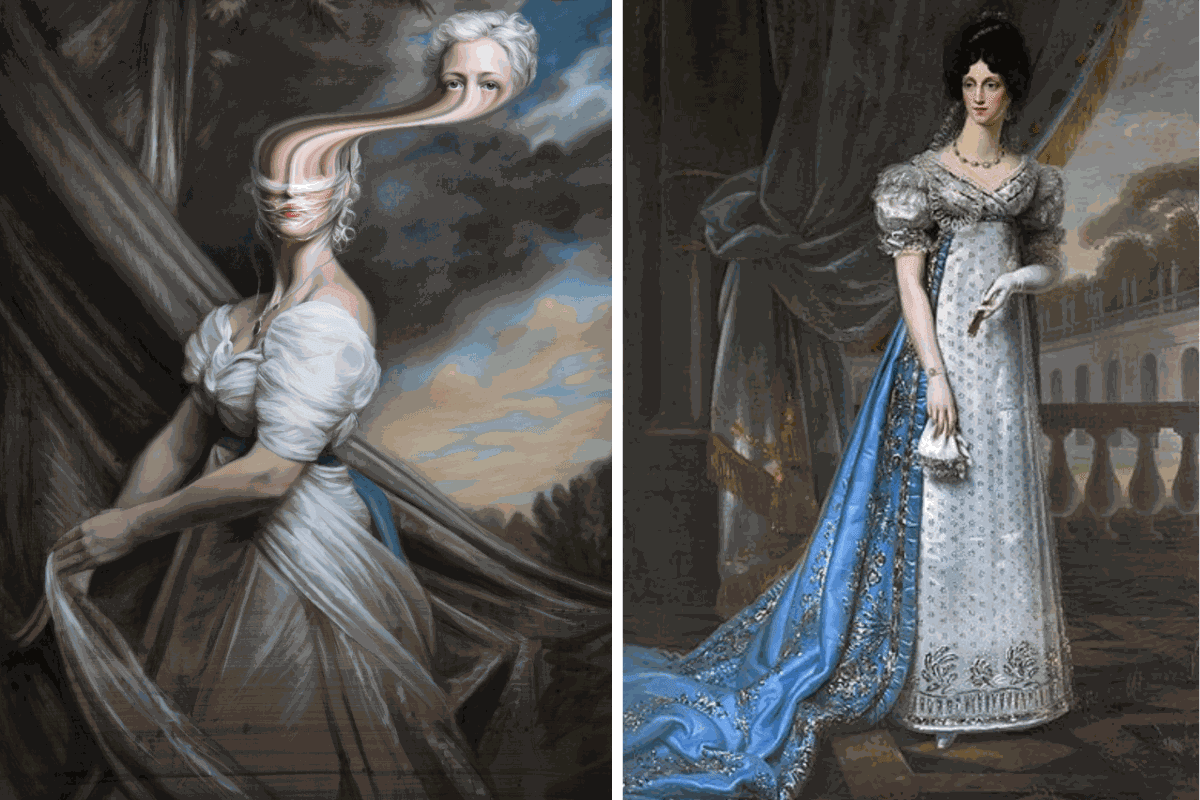
Ashton is obsessed with history in general, finding comfort in the past and appreciating museums as inspiring and meditative places. He focuses on the Regency era and the birth of the British Empire, subverting the concept of celebrity and fame conveyed in portraits of the past through image distortion and the creation of unusually sized portraits that convey insecurity and instability.
With exquisite skill, he subverts images from the past, creating a work unprecedented in art history and unmatched in the contemporary art world.

A LOOK AT THE HISTORY OF MATTHEW GRABELSKY
For the artist, animals become manifestations of his subjects' subconscious, gradually revealing their true essence and identity. His paintings, inspired by the techniques of academic and naturalistic painters of the 19th century, create incredible and surreal yet detailed scenarios, capturing the viewer with a sense of wonder and disbelief.
Grabelsky's hyperrealistic painting explores a surrealism that balances perception and anthropological observation, inviting viewers into a compelling narrative that blurs the boundaries between the visible and invisible, outer appearance and inner essence.
In Matthew Grabelsky's artistic universe, a mythical world populated by fantastical creatures beautifully merges with the contemporary through incredible painterly execution. His technique is hyperrealistic, and the artist is constantly in pursuit of the perfect painting. He enjoys challenging himself with technically demanding subjects, always finding a sense of discovery in each new artistic endeavor.
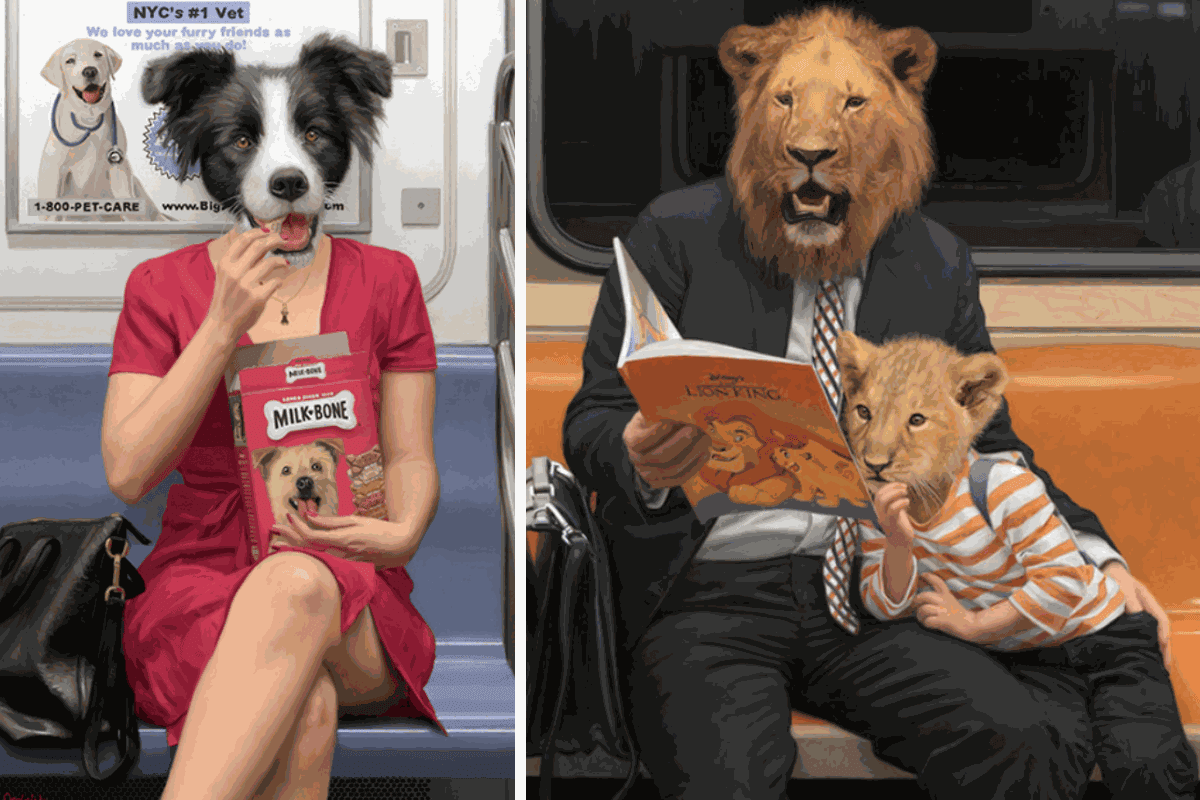
Quoting the artist: "I fell in love with realistic oil paintings when I was in college. I saw these incredible works in museums and had a strong desire to learn to paint like that. I started by buying some oil colors and brushes and tried to do something similar to what I admired, but I couldn't come close to such perfection. Now, after years of study and practice, I have reached the point where I can match oil painting with the images I see in my head, and this is immensely gratifying and a great sense of accomplishment. Although I am sure I will spend the rest of my life trying to perfect my technique, I have finally reached a point where I can express myself through oil painting."

Having grown up in New York, he sees the city as the archetypal urban environment. Although he has also lived in Paris, he chose New York for its contemporary feel and diversity. The streets, buildings, and urban density of the city provide the perfect backdrop for his works. The New York City subway was the primary location for his early paintings of animals, but he later expanded his scenes to include the streets and parks of the city.

For example, in "The Cat in the Hat," presented in the exhibition "Where The Wild Things Are," a family with white tiger heads is reading the eponymous book by Dr. Seuss. Grabelsky chose white tigers to represent wild cats, combining their coloring with the cat in the book. Although tigers are often seen as fierce, this painting captures a familiar and tender moment, revealing a sweeter side of these predators.

Grabelsky constantly thinks about painting, whether he is actively painting or engaged in other activities, as it is his main passion in life. Growing up with parents in the art world, he has always been involved in art, with a preference for mythology, which inspires his creatures. Mythology, for him, is an essential source of inspiration, representing common stories that change and evolve over time.
He often paints while listening to audiobooks, which inspire him with their narrated stories. His technique is influenced by 19th-century academic and naturalistic painters, infused with a surreal touch. He begins his paintings with an idea, gathering reference materials and choosing friends or family members as models for his characters. He photographs the subway and other environments to create the right settings, and then adds character-related details during the painting composition process.

His paintings often draw from his childhood memories, heavily influenced by reading and fantasy. He paints his characters with animal heads in a world populated by humans, creating an ambiguity that appeals to the artist and offers viewers the freedom to interpret. His color palette is vivid and varied, used to emotionally engage the audience.
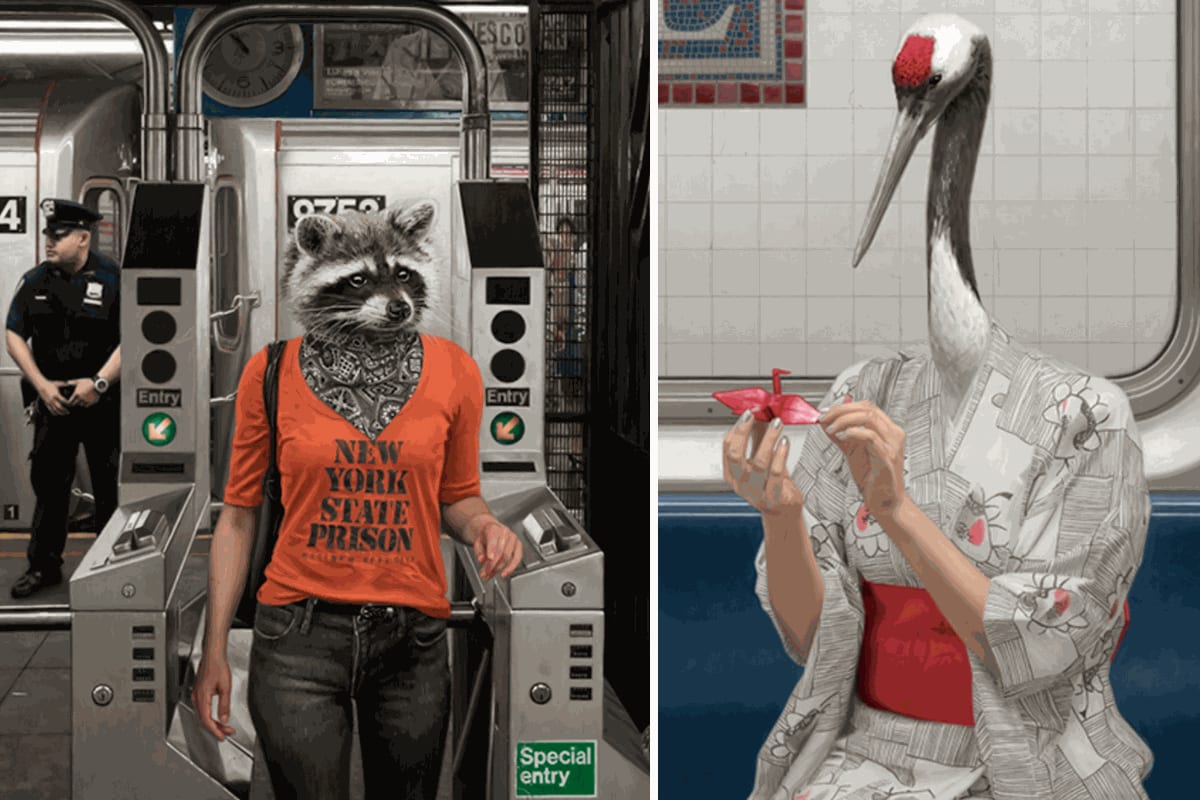
A BRIEF HISTORY OF PORTRAITURE
Portrait painting is probably the most widespread genre in the history of art since ancient times.
Indeed, the human figure has always been a fascinating subject for artists of every era. From ancient Egyptians to the contemporary age, portraiture has been a means to convey identity and symbols of power, as well as a way to preserve the memory of a past moment or a person who is distant or no longer alive.
Before the invention of photography, portraiture was the primary method for depicting faces and figures, either by reproducing them from life or reconstructing their features from memory or existing visual records.
The artist creating a portrait seeks to reproduce or interpret the characteristics and expressions of the subject, although the portrait does not necessarily have to be true to reality; it can also be idealized.
The creation of a portrait can be done for personal, political, or social reasons. A portrait can highlight the physical characteristics of the subject, testify to their social status, or focus on their psychological and character traits.
In ancient times, portraits were reserved for great figures such as sovereigns, emperors, or wealthy aristocrats.
During the Roman era, portraits were predominantly used to depict nobles, especially members of the imperial family and representatives of the Empire, and they had a purely political significance.
In the Middle Ages, however, the portrait lost importance before being slowly rediscovered.
During this period, depictions were primarily dedicated to sacred figures: Christ, the Madonna, the Popes, saints, and martyrs were the most represented subjects, with divine figures portrayed on a large scale while the patrons were depicted in disproportionately small sizes.
The modern conception of portraiture emerged in the 1400s when the centrality of man was rediscovered in art and portraiture was established as an autonomous genre. Since then, portraiture, which was initially the prerogative of the nobility, spread to courts, lordships, as well as within ecclesiastical and urban bourgeois circles, becoming a status symbol.

With the advent of the Renaissance, things began to change, and the genre of portraiture started to spread, finding wide success and development primarily in Florence and the Flanders.
The early portraits of the time still followed fairly classic conventions, often preferring a profile representation. However, Flemish painters decided to abandon the profile representation and began to paint subjects in a three-quarter pose, with more detailed facial features.
From the early 15th century onward, Flemish painters would teach Europe the art of portrait as an autonomous work on panel. These artists stood out for their extremely analytical attention to facial features.
More specifically, it was Jan van Eyck who introduced the three-quarter view, which favored the psychological investigation of the character, placing them in direct contact with the observer.
Dürer, on the other hand, initiated the tradition of the self-portrait in a mirror, a method through which artists explore and deepen their self-knowledge. This practice allows viewers to see themselves reflected in the portrayed figure, discovering potential similarities.
Important aspects of Renaissance portraiture included the presence of small symbolic and idealized elements, as well as objects that represented the wealth and prestige of the person depicted. Above all, there was a propensity to highlight the personality of the subject portrayed.
From the sixteenth century onwards, many artists ventured into portraiture, and it can be said that probably all the greatest masters of the time dedicated themselves to it, including Leonardo, Titian, and Raphael.
During the Baroque and Rococo periods, portraiture had even greater emphasis as an image of opulence laden with symbols of power and wealth. Portraits became richly detailed and extremely ornate.
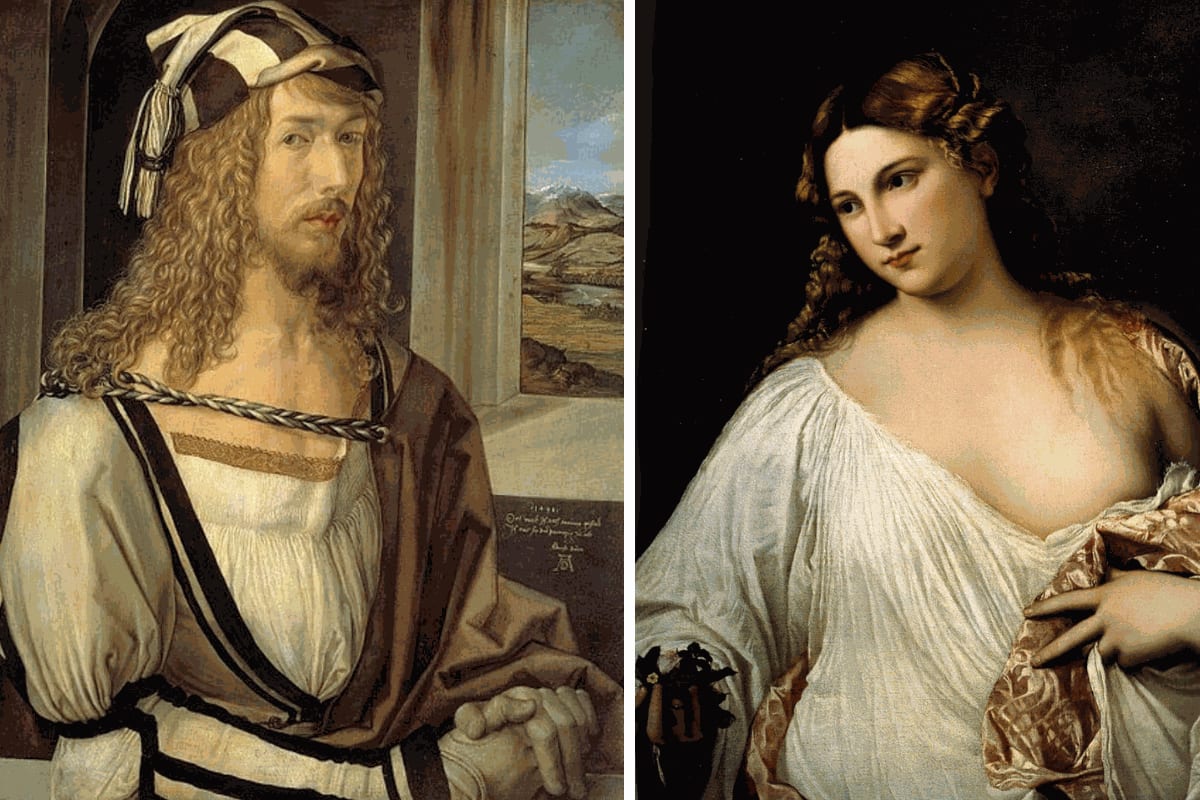
A male portrait of great beauty from the 17th century that we find particularly interesting is "The Laughing Cavalier" by Frans Hals (1582/3-1666), presented at the Wallace Collection in 2021. This captivating work, dated 1624, is a wonderful example of Hals's highly innovative approach to male portraiture.
Hals revolutionized male portraiture through his pose and painting technique, creating something entirely new and, above all, capturing and revealing the characters of his subjects like no one had done before him.
But the true golden age of portraiture was the 18th century. During that period, intimacy and sensitivity began to prevail, and there was an increase in representations of families, children, and even people from the theater.
By the end of the century, the new neoclassical sensibility spread widely, emphasizing light tones, simplification of lines and facial features, and drawing inspiration from Greek art. Prominent artists of this period included Antonio Canova and Ingres.
During this time, the faces of ordinary subjects also made their way into paintings, captured in picturesque compositions and with a style that reflected popular taste. While not the patrons of the artwork, these individuals captured the interest of artists eager to explore the human figure.

In the 19th century, portraits diverged into three main currents: the "classical" following the footsteps of Jacques-Louis David, the "romantic" movement led by Eugène Delacroix, and the "political" trend of Gustave Courbet.
Later on, the invention of photography brought about radical changes in portraiture, opening up new scenarios.
Moving into the 20th century, portraiture was influenced by the abstract movement, which placed the "inner self" at the center of the portrait, above the objective representation of the subject. Prominent modern artists who created portraits included Modigliani, Mirò, De Chirico, and Picasso.

Some may think that with the advent of photography, portrait painting or sculpture declined, but in reality, as we can see from the splendid works of artists like Ben Ashton and Matthew Grabelsky, portraiture is still a highly sought-after genre that continues to evolve. It is expressed in various and deeply personal ways, reflecting both the era and the inner feelings of the artist.



